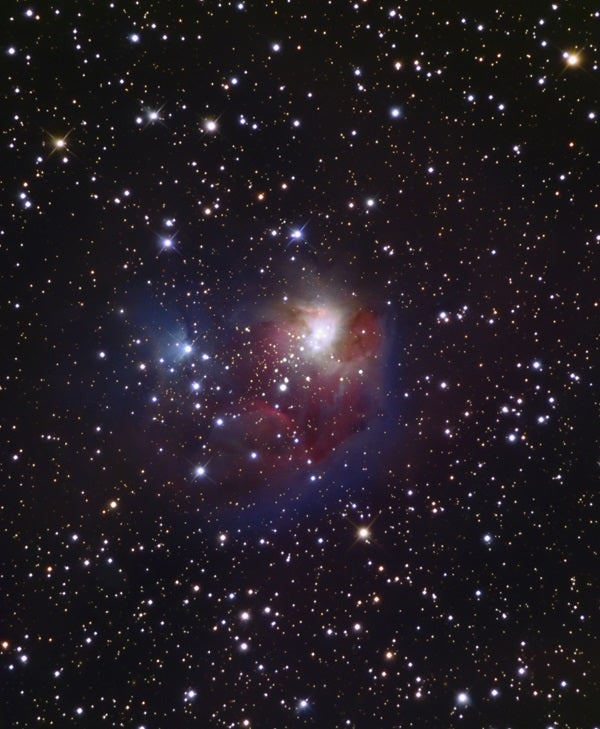Whoa! It’s time to slow down and take a deep breath. Clear, moonless nights are all too rare, and when one comes along, it’s tempting to try to chase down dozens of celestial sights. But an evening skygazing session is much more enjoyable if you settle on a handful of select objects. Save the rest for future clear, moonless evenings. Believe it or not, there will be others.
Now that your breathing rate is back to normal, grab a pencil and paper and prepare an organized, short observing list. If you plotted major celestial happenings on a desk calendar like I suggested last month, begin by seeing if any must-see events are on tap for tonight. If you didn’t, use Astronomy’s Sky This Month section (page 36) as a guide.
But what about the rest of your list? Here are a few suggestions for the astronomical “newbie” who would like a taste of the finest sights a February evening has to offer. All are plotted on the Star Dome map.
The all-sky deep-space sampler: The Andromeda Galaxy (M31), the Double Cluster (NGC 869 and NGC 884), M41 (an open cluster located 4° south of Sirius), the Beehive Cluster in Cancer (M44), and a galaxy pair in Ursa Major (M81 and M82).
The all-sky double-star sampler: Gamma (γ) Andromedae, Eta (η) Cassiopeiae, Castor (Alpha [α] Geminorum), Gamma Leonis, and Mizar (Zeta [ζ] Ursae Majoris).
The Orion Nebula (M42): This celestial masterpiece deserves an evening all to itself. Start by checking out its visibility with both the unaided eye and binoculars. Then, with a telescope, carefully study the nebula at various magnifications. Can you see M43 — a detached part of the Orion Nebula? Are you able to discern any color? Now, key in on the Trapezium — that amazing multiple star embedded in the nebula. Four stars are easily seen, but a 6-inch or larger scope can reveal a few fainter members. How many can you see? Your goal is not just to look at the Orion Nebula, but to literally experience it. You’d give yourself more than 10 minutes to look at the Grand Canyon. So why rush your visit to this cosmic wonder?
Back to your roots session: Do you still have that 60mm refractor you bought as your first telescope? If so, use it to view the offerings listed in the deep-space and double-star samplers. You may have forgotten how capable such a small telescope can be.
Phil Harrington’s “Binocular Universe”: Here’s a thought. Check out the binocular targets in Phil’s column (he’s on hiatus this month, but will be back in March). Then view them with your telescope. It’s a great way to compare the capabilities of these instruments.
NGC 1931 (bright nebula and cluster in Auriga): In “New month, new target” (January 2016), I described the monthly Observer’s Challenge put out by the Las Vegas Astronomical Society. The Observer’s Challenge encourages you to spend an evening on a single deep-space object. You then send your image/sketch/notes to Challenge co-founder Fred Rayworth, who assembles a monthly summary that’s posted online. This month’s Observer’s Challenge is NGC 1931, an emission and reflection nebula located about a degree west of M36. An archive of past Observer’s Challenge posts can be found at rogerivester.com/category/observers-challenge-reports-complete.
Questions, comments, or suggestions? Email me at gchaple@hotmail.com. Next month: My favorite observing guides. Clear skies!










